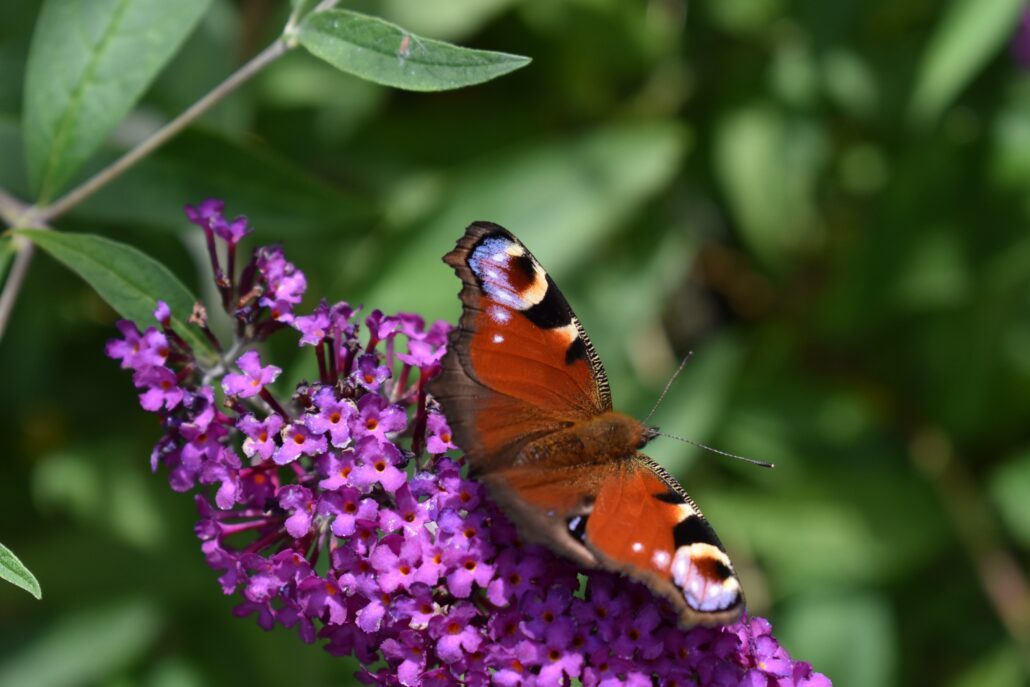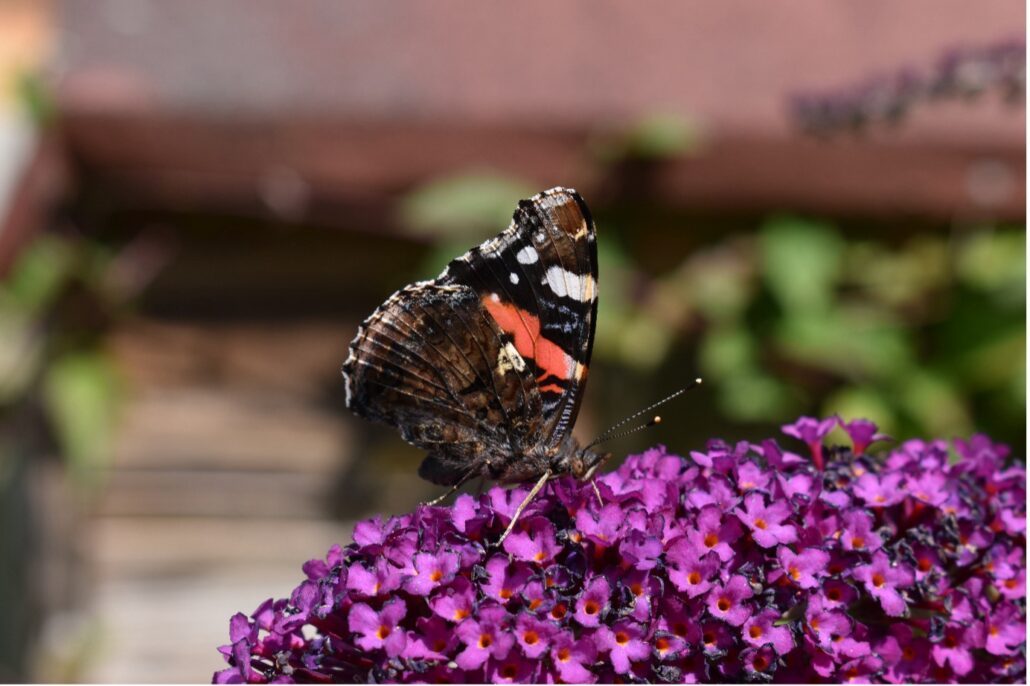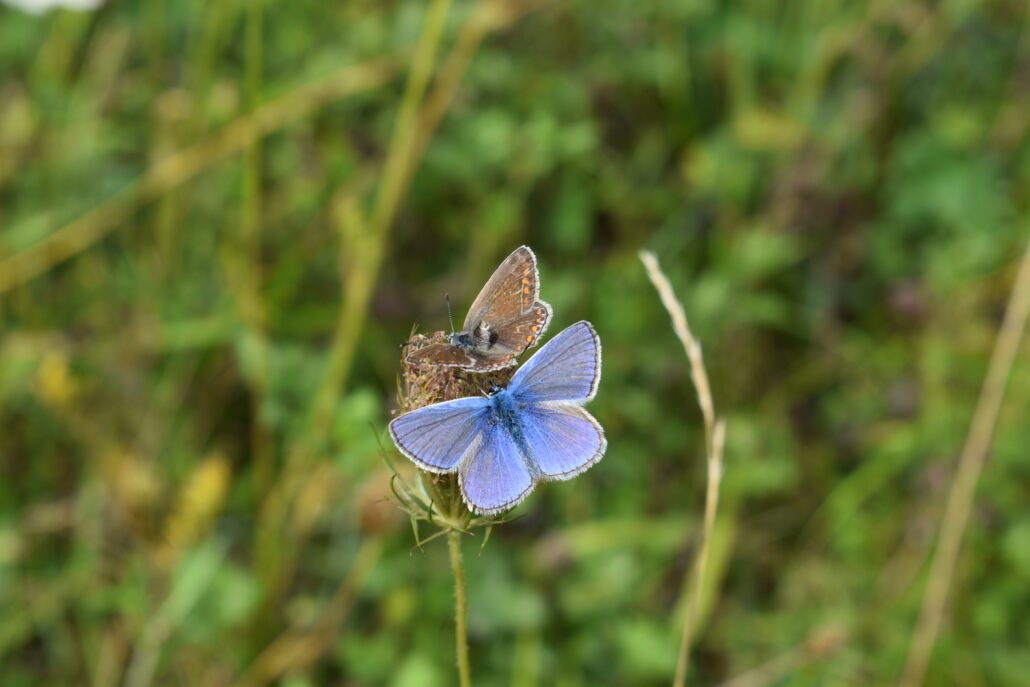
Butterflies as indicators of our impacts on nature
By Willow Neal, postgraduate researcher and Associate Lecturer at The Open University in the School of Earth, Environmental and Ecosystem Sciences.
Butterflies are beloved by many across the globe. They are often striking, with a variation in size, shape and, most famously, a beautiful array of colours. They accentuate a bright, sunny day with a splash of colour. Association with our many flower species make them a joy to be seen. As a nation, we have loved observing and collecting butterflies for generations, resulting in important collections and works. Prominent British scientists have spent a lot of time looking at butterflies the world over. Some of the historic collections of butterflies are now held in our museums. One example I encountered is held by The Natural History Museum and dates to the late 1800’s. It was collected by Henry Bates, a pioneering naturalist-explorer, during a trip to Colombia, South America which he wrote about in The Naturalist on the River Amazons, published in 1863. “The Butterflies of the British Isles” published in 1906 by eminent lepidopterist Richard South also shows the long fascination with British butterflies. This book is an important milestone in our understanding of the ecology of butterflies, but he was just one among many of his time to collect, describe, and document this group of insects. Records taken then about what species we have and where they were found have developed our understanding of butterflies and how they respond to changes brought upon them by human activity.
Butterflies are more than pretty; they are what’s known as a bio-indicator species. As caterpillars, they have a close reliance on often very specific plants, or as adults, a requirement for nectar sources on very small scales, so their numbers can give us a good indication of trends in other species that are not so well-documented or easy to record, such as other pollinators or plant-eating insects that benefit from the flowers of the plants that sustain them. They also can give us a good indication of the impacts of climate change, where range shifting due to climatic preferences shows many species moving northward. This benefits a few butterflies who can easily move, for example if their larval food plants are widespread or the landscape is easy to move through, but there are also many butterflies that find themselves restricted due to their limited dispersal capability – some butterflies never leave their own woodland! Climate change compounded with land conversion to arable land or urbanisation has driven our butterflies into dramatic decline, with a downward trend of 80% since the 1970’s. As these species are a barometer for ecosystem function, there is a stark warning here that a decline of this magnitude describes a concerning future for nature as a whole, including us human beings.
Urban woodlands, are an important refuge for over 30 species of butterfly such as the Large White, Common Blue and the Peacock. Trees are also important in sequestering carbon and providing us with clean air and are critical to help us adapt to climate change so a focus on urban woodland butterflies allows the study of a host of important topics at once. As urban areas are set to grow, and as they creep into the countryside to fragment semi-natural habitats and entirely flatten others, we need to understand how to help nature to help us adapt to the changing climate. Urban woodlands also deliver important health and well-being benefits by improving our mental health and reducing anxiety.

Urban woodlands can be improved for butterflies, even when they cannot be made larger due to the surrounding urbanisation. Habitat management techniques can introduce a complex canopy structure, that is, a woodland with lots of open sunny areas as well as a mixture of shaded and dense woodland. This management technique can provide habitat for the most species possible including butterflies (more here: https://doi.org/10.1007/s10841-024-00594-z). Leaving urban woodlands alone to ‘do their thing’ is not the best approach, and active and informed habitat management for complexity is key. In addition, habitat connectivity is critical to ensure urban woodlands and other habitat patches are interconnected. The next stage of my research, underway in Milton Keynes, is developing a system which can understand the city’s habitat connectivity from the butterfly’s perspective. If we can understand more about what makes a route viable for a butterfly to get to the next habitat patch, we shall be able to understand what we can do to change the landscape to better connect one woodland to another. The vision is to create a conservation management tool that can identify breaks in a network to then repair them through conservation interventions. One such project to increase pollinator corridors is an OU citizen science project, X-Polli:nation which encourages the planting of 1m2 pollinator patches. Connectivity such as this may allow less mobile species to move across the landscape and help them adapt to climate change.
Ultimately, urban planning, land use decisions and land management must deliver more of the right species of trees in the right places, with the right habitat management interventions. Such actions will protect our natural environment for the next generation. More broadly, we must start preventing the consequences of our increasing carbon emissions, insensitive land-use changes and traditional land management approaches. This means redesigning our estate and land management policies including drastically reducing pesticide use and mowing schedules as well as implementing proven habitat management techniques to support biodiversity. Inspired by the BBC / OU co-production Wild Isles, the RSPB, WWF and the National Trust commissioned a film and a website with specific actions for businesses: Saving our Wild Isles . Narrated by Sir David Attenborough, the film calls for all types of businesses to put in place nature positive plans. Proposed actions relate to a range of business products, processes and services, as well as management responsibilities. It is critical to upskill and reskill land managers to focus on regenerative practices. These include the removal and prevention of sources of pollution, the creation of sustainable urban drainage and habitat management plans informed by science with a focus on conservation to preserve wildlife. Butterflies have been loved for many hundreds of years, and as a species so beloved, varied, and beautiful we must ensure their survival so that future generations know the joy of seeing their vibrant colours flutter by or of watching them gracefully feed on a flower in the garden on a warm day. Their extinction would signal the loss of many unseen species as well and does not bode well for us human beings, part of the same web of life. As we navigate the complexities of nature conservation and climate change, give some thought of their importance the next time you see a butterfly. A world without them is one we must never know.

About the author
Willow Neal (They/Them) is a postgraduate researcher and Associate Lecturer at The Open University in the school of Earth, Environmental and Ecosystem Sciences. They are currently researching urban woodland butterfly conservation and have a background in environmental science (BSc) and conservation ecology (MSc). Previously, Willow studied climate change impacts on woodland insect emergence, and the consequences on butterfly populations of agricultural land fragmenting countryside woodlands. In addition to studying insect conservation, they are also conducting research into the experiences of LGBTQ+ environment degree pathway students at The Open University to understand how wider social challenges impact academic awarding. This research aims to understand how the university can apply best practice to provide an industry-leading experience for our queer student community.